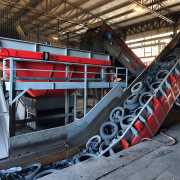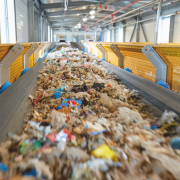Brazil: Rio Gets a Pilot Plant to Explore Energy from Waste
A national technology to process and explore energy from organic waste started being tested in the city of Rio de Janeiro.
As reported, the pilot plant is installed in a processing facility of the City Company of Urban Cleaning (Comlurb) in the Caju neighborhood and has in January completed a month in operation. According to the information, it is able to extract 100 to 150 cubic meters of biogas per processed ton, with 50 to 60 percent of methane concentration. The technology, which produces fertilizer and natural gas from waste, was developed by the Federal University of Minas Gerais (UFMG) in partnership with companies Methanum Tecnologia Ambiental and Comlurb. The operation of the pilot plant, which was funded by the Brazilian Development Bank (BNDES – Banco Nacional de Desenvolvimento Econômico e Social), will allow testing the efficiency parameters of the methanization technology by anaerobic composting and widening the scale. With a processing capability of 30 tons per day, the plant has an estimated monthly biogas production capable of feeding a fleet of 1,000 cars or generating enough energy for just over a thousand houses.
The unit consists of modules the approximate size of a container, which receive the waste and are sealed for a period of two to three weeks, while the bacteria introduced into the compartment degrade the organic matter and produce methane. The gas is stored while the remaining material is removed and used as fertilizer. The plant also has a generator to produce electric energy from gas combustion. “The Comlurb plant in Caju neighborhood was chosen because it receives solid waste from different neighborhoods, with different consumption and waste production standards, offering enough diversity to simulate the conditions of different Brazilian towns,” the information said. “In addition, Comlurb already has a conventional composting plant with in situ aerobic digestion, which allows comparing the results of the two technologies.”
Photo: pixabay
GR 12019








